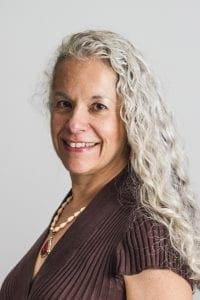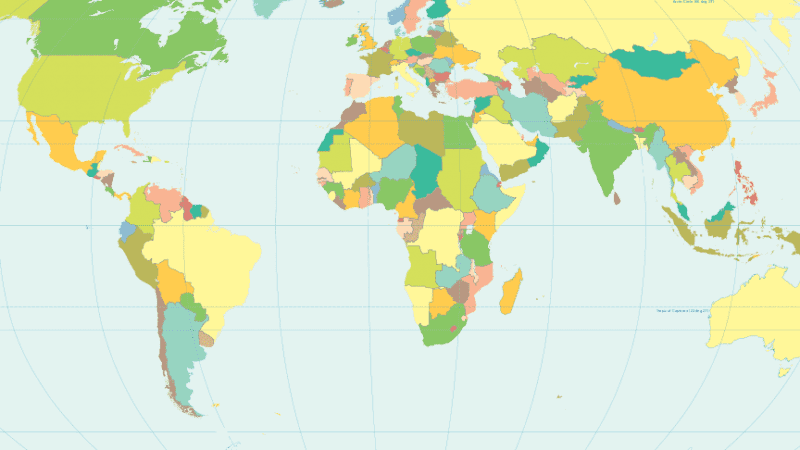Why is it so important for students learning a new language to be able to ask their own questions? And how are world language teachers making student questioning a practice in their classrooms? We spoke with three such educators; Judy Wilson, Leticia Quiles, and Beth Skelton, who shared below how and why they’ve used the QFT to accomplish the unique instructional goals of the language classroom.
Student engagement
“My motto has long been, ‘All learning starts with a question,’” says Wilson. “In the language classroom we are all working towards learning a new language by mastering the art of communication through exchange of information. Both children and adults naturally learn about the world by observing, testing and asking why.”
Just as in any classroom, questions, when generated by students, elicit their genuine curiosity, thereby giving them a real motivation and purpose for learning. Students are even more engaged in the learning when their questions help to set the agenda.
In Quiles words, “It encourages the student to be an active participant in and contributor to their learning. By allowing students to lead the discussion, we are encouraging them to care about the lesson. As teachers, many times we teach what we find interesting or what is required of our curricula. The QFT allows students to blaze a new path, in essence, teach us what they want to know.”
For objectives as critical as authentically engaging students in learning, language teachers may find it worthwhile to conduct the QFT in students’ native language (or in both languages as students are able) at the beginning of a unit or year. Per the ACTFL’s position that 90% or more of class time be conducted in the target language, the Language Educator published a guide for teachers called Going for 90% Plus: How to Stay in the Target Language (Crouse 2012). The article concedes that “Even 100 percenters will employ English strategically during the early days of a course, particularly in explaining learning goals, assessment standards, and expectations for student behavior.” Language teachers might consider investing the time they have for native language use by allowing students the opportunity to instead ask questions about learning goals, and subsequently build long-lasting curiosity, purpose, and motivation towards the course learning.
Cultural competence and understanding
Wilson suggests that aspects of the world language curriculum are indeed well-suited to investigation through questions. One such aspect is the study of the target culture. “The ACTFL World Readiness Standards are culture driven,” she says. “Students need opportunity to ask questions about other cultures freely and in any language. Asking questions about other cultures in any language helps students develop empathy and walk in the shoes of someone different. In my experience as a teacher, administrator, mom, and grandma, kids of any age have a gazillion questions when surrounded by people and situations they may not completely identify with.”
The study of language structures
Similarly, Wilson points out, the QFT provides students the opportunity to investigate the nature of language in general, which is important for learning grammar in context. Beth Skelton notes, “It is hugely important to be metacognitive about language.”
“Using the QFT is an authentic strategy that encourages students to practice the language and study how questions are formulated, thereby helping them be more proficient in the target language,” Wilson says. “For example, the activity of changing questions from open to closed provides opportunity for students to study language syntax in both native and new language.
Consider this example in spoken English: Where are you from? In Spanish: ¿De dónde eres? Most Spanish questions follow this exact same formula. Note that the from goes at the end of the question in English, and at the start of the question in Spanish (de). In English, we finish questions with prepositions (about, for, from, on, with, etc.) most of the time. In Spanish, you don’t usually finish a question with a preposition. Here is another example. In spoken English: Who are you going with? is correctly translated to ¿Con quién vas a ir? in Spanish. A word-for-word translation from Who are you going with? to ¿Quién vas a ir con? would be unacceptable in Spanish. Correct placement of words when formulating a question in a new language takes practice, practice, practice. The QFT provides lots of it.”
Communication
Both Wilson and Quiles say that students’ questions are in fact critical for what many see as the central objective of language learning: communication.
Quiles writes, “The focus of a World Language classroom is communication… You learn by doing, which is exactly why encouraging students to have an active role in their learning, via QFT, can be a strong component of a World Language classroom.” The QFT process itself is a structured, student-driven protocol which mandates students think freely without judging or censoring questions, and encourages universal participation. In doing so, it honors a space completely dedicated to student thinking and talking and gives students a low-stakes yet rigorous opportunity to try out speaking in the target language.
Wilson adds that learning how to ask questions is just one of many elements students must necessarily learn and piece together when trying to communicate. In her classroom, just like conjugating into the past tense and practicing pronunciation, “Asking questions is a tool to be mastered. Many tools are available to you as you communicate. You have to be aware of them, and use them purposefully. The better you become at using these tools the better you’ll be at communicating.”
Finally, Quiles uses the QFT as a way to generate authentic topics for conversation in the target language, just as you would do with questions in real life. She writes, “The question is simply the starting point for a discussion in the target language using vocabulary and appropriate grammar. Communication is the goal, vocabulary and grammar are the means to the end. The QFT can help guide student curiosity, eliciting something they want to talk about.”
These are just some of the ways world language teachers are using student questions in their classroom. Click here to read on about how teachers are making the QFT accessible to learners at different levels of language proficiency.
We are still learning about the use of the QFT in the language classroom from educators in the field and would love to hear from you! Please send us at email at contact@rightquestion.org if you have an example you’d like to share.

Leticia Quiles has been a teacher for over 15 years. She is presently a member of the World Language Department at Bishop Guertin High School in Nashua, New Hampshire, where she has taught college-prep, honors, pre-AP, and AP Spanish Language and Culture. Leticia also moderates the Spanish National Honor Society and is the Professional Development Chairperson. Leticia is also the first teacher in the state to teach AP Capstone. Leticia graduated from Cornell University with a double major in Biology and Psychology, and a double minor in Chemistry and Spanish. She earned her Masters Degree in Spanish from Rivier University. Leticia is also the Director of Mainely Rat Rescue, a non-profit small animal rescue organization.
 Judith Wilson is currently a consultant for The Executive Leadership Institute, an affiliate of the Council for Supervisors and Administrators in New York City. She works as mentor for new school administrators, presents at national conferences, and helps schools learn how to communicate their vision and values to the school community. Judith spent her education career working for the New York City Department of Education as a teacher and assistant principal in middle school level and as a principal at the elementary school level. Her teaching and instructional background includes teaching World Languages (Spanish and Italian) and English Language Arts. Judith recently presented The Question Formulation Technique to World Language Teachers at the 2019 ACTFL American Council of Teachers of Foreign Language conference in New Orleans.
Judith Wilson is currently a consultant for The Executive Leadership Institute, an affiliate of the Council for Supervisors and Administrators in New York City. She works as mentor for new school administrators, presents at national conferences, and helps schools learn how to communicate their vision and values to the school community. Judith spent her education career working for the New York City Department of Education as a teacher and assistant principal in middle school level and as a principal at the elementary school level. Her teaching and instructional background includes teaching World Languages (Spanish and Italian) and English Language Arts. Judith recently presented The Question Formulation Technique to World Language Teachers at the 2019 ACTFL American Council of Teachers of Foreign Language conference in New Orleans.
 Beth Skelton, M.A. Ed., is an international consultant presenting workshops and coaching teachers who work with English Language Learners. She has taught English and German at most grade and ability levels and continues to be fascinated by the process of language acquisition. She is the author of student and teacher materials for ESL entitled Putting it Together, which incorporate the TPR StorytellingÓ method. Beth is especially passionate about methods that build comprehension and engage all learners. From 2010-2013, she was the coordinator for the English as an Additional Language Program at the Bavarian International School north of Munich, Germany. On a personal note, she is the proud mother of a trilingual daughter. She can be reached through her website: www.bethskelton.com
Beth Skelton, M.A. Ed., is an international consultant presenting workshops and coaching teachers who work with English Language Learners. She has taught English and German at most grade and ability levels and continues to be fascinated by the process of language acquisition. She is the author of student and teacher materials for ESL entitled Putting it Together, which incorporate the TPR StorytellingÓ method. Beth is especially passionate about methods that build comprehension and engage all learners. From 2010-2013, she was the coordinator for the English as an Additional Language Program at the Bavarian International School north of Munich, Germany. On a personal note, she is the proud mother of a trilingual daughter. She can be reached through her website: www.bethskelton.com
